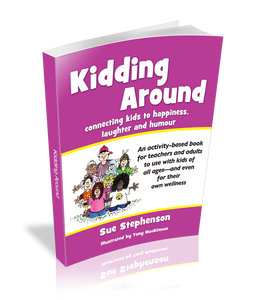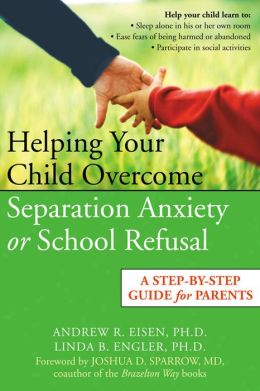This blog was created to share experiences and resources with other elementary counselors.
Pages
▼
Wednesday, August 27, 2014
Reaction to Video
Yesterday I introduced my presentation on Bullying Prevention by showing the Conscious Discipline video "How to Build A Bully from Scratch." I got more positive feedback on this presentation than any I have ever done for staff. I highly recommend using it to educate your staff about what bullying is and is not. It would be good for a parent presentation as well.
Saturday, August 23, 2014
Diaphragm Breathing

Here is a well done brief video to teach breathing to get calm 4-7-8 It is important to teach students to breathe from diaphragm not the chest. The video and a brief practice could be done at the beginning of a lesson or group session.
Thursday, August 21, 2014
Sunday, August 17, 2014
Cyberwise
Cyberwise.org has lots of resources for educators and parents. Check out some of their videos about digital citizenship.
Managing Anxiety

Wednesday, August 13, 2014
Counseling Advisory Committee
Even though we don't go back to school until after Labor Day I have been getting my "advisory council" organized. I asked, and they agreed, two new teachers to serve and 3 will return. We have 2 parents returning and we will recruit 2-3 more when I return in 2 weeks. We try to have about 1/3 of the committee be new each year. We are fortunate to have most of our parent members with mental health related field backgrounds. We also try to invite at least two minority parents since our staff is 90 percent Caucasian. We also invite two fifth grade student representatives who are SCA officers. We have always met once a quarter. That keeps the committee in the loop all year but is not a huge burden. We meet before school and the meetings are only 40 minutes long ( and then we generally debrief with the parent members for about 10 minutes longer). The first meeting of the school year is always in October (then December, February, and April). We propose draft counseling program goals and solicit other ideas for the year. We also share the evaluation results from the previous school year. For example, suggestions for books for our parent-staff book discussion. Each subsequent meeting we update the committee on the goals. I sent out tentative dates for approval by our administrators. Officially both our Principal and Assistant Principal are on the committee but they take turns actually attending. We send out an agenda before each meeting with handouts and follow--up with minutes about a week after each meeting. Last year a big part of the Committee's work revolved around our applying to Re-RAMP.
Tuesday, August 12, 2014
Measuring Elementary School Students' Social and Emotional Skills

A newly released report by Child trends identifies 5 groups of social emotional skills and provides educators with tools to measure and monitor social and emotional skills that lead to academic success. The skills are: Self-control; Persistence; Mastery Orientation; Academic Self-Efficacy; and Social Competence. The report recommends measuring these skills with either teacher and/or student surveys. They provide the surveys in at Appendices and scoring guides. I plan to use the student survey with all my grade 3-5 students this fall. I highly recommend you download this report at http://www.childtrends.org/
Monday, August 11, 2014
ASCA Scene

Connect and Compare
Are you a member of the ASCA SCENE, online professional networking site? If not, you’re missing out on a valuable benefit. The SCENE lets you share your experiences with others in the field and, even more importantly, get help with your problems or concerns, advice on new products and programs and much more. With the SCENE, help is as close as your computer or mobile device. I use PowerPoints and lesson plans from the file cabinet all the time. I also check the ASCA Resource Center periodically for ideas and resources other counselors have shared.
Are you a member of the ASCA SCENE, online professional networking site? If not, you’re missing out on a valuable benefit. The SCENE lets you share your experiences with others in the field and, even more importantly, get help with your problems or concerns, advice on new products and programs and much more. With the SCENE, help is as close as your computer or mobile device. I use PowerPoints and lesson plans from the file cabinet all the time. I also check the ASCA Resource Center periodically for ideas and resources other counselors have shared.
Sunday, August 10, 2014
Teaching Kindness


Thursday, August 7, 2014
School Refusal

Tuesday, August 5, 2014
Welcome New Students
Each year we have about 50 new students start at our school in grades 1-5 and over 100 kindergarten students. Each new student in grades 1-5 is given a button to wear the first week of school that helps remind returning students and staff to introduce themselves and make them feel welcome. The counselors and pupil services staff host several "Welcome New Nottingham Knights" the first week of school. Depending on the numbers at each grade level we typically do 3 sessions: grade 1; grades 2&3; and grades 4&5. At the Welcome Reception all students get their picture taken for the bulletin board in the lobby, receive a New Student Survival bag, get a Passport, and play school trivia. We have gotten very positive feedback about our new student activities so we will repeat them again this fall. The Passport has pictures of staff in the building that work with the whole school. In the picture above I am helping some new first graders complete a page of the Passport so they know what is expected. This activity helps new students get to know something about staff and for the staff to get to meet the new students. Our office and clinic staff always appreciate the Passpost activity. It usually takes about 2 weeks for newcomers to complete the passport. The classroom teachers assign new students lunch and recess buddies as long as needed and their buddy walks around with them while they complete the passports. When they are completed the Passport are shown to the counselors and the new students select from the prize box. The counselors invite the new students by grade level for a follow-up lunch later in September. Since we typically have over 15 new first graders we host the boys and girls separately for the follow-up lunch.
Here is last years New Student bulletin board (it includes new staff as well as students):
Sunday, August 3, 2014
Mindfulness
Mindfulness is a growing field that I think most counselors should explore. Here is a good research
ARTICLE-IN-JOURNAL-MINDFULNESS that overviews the research in using mindfulness in K-12 settings. ACA in Counseling Today(October 2013) also recommended mindfulness and meditative exercises as preventative practice against compassion fatique. I know personally after two very rough school years with too many deaths it is something I really needed this summer to restore myself. There are of course many apps for mindfulness, try I Can Be Fearless.
Saturday, August 2, 2014
Incorporating Mindfulness Into Class Lessons
Mindfulness is a way of exploring the world
with a fresh set of eyes. I attended a few sessions on mindfulness at VSCA's Spring Conference and have been doing a self-study of mindfulness this summer and meditating daily for the first time. The concept can be broken down into a three part
equation, or what The Mindful Child author Susan
Kaiser-Greenland calls the ABCs: Attention,
Balance, and Compassion. I am now planning ways to share what I have learned with my staff and students when school resumes. For example, I will do a standing mindfulness exercise with my staff when before I do our annual bullying refresher training during preservice week. Mindfulness in schools, the workplace, and the larger world is growing as a way to deal with our increasingly stressful lives. I know it is helping me and it can make school a more peaceful environment.
According to the University School’s mindfulness coordinator,
Mary Agee,
“It’s not about clearing your mind; it’s just about becoming
aware.” Helen Tarleton, school counselor, illustrates mindfulness by shaking a snow globe. “When you shake
the snow globe, it’s really hard to see what’s going on in the present moment
clearly. What mindfulness does is, your mind is cluttered like [a shaken snow globe], and you stop and pause, and
take time to really focus. All that clutter kind of then settles, so you can
see clearly what’s right in front of you.” Others use the analogy of stirring sand in a class. The sand represents thoughts and feelings, let them settle to the bottom. They are still there to go back to later.
At the start of a lesson invite the students to participate
in a brief (3-5 minutes) mindfulness practice.
Just explain that before beginning a lesson on ___ this exercise will
clear our minds so we can pay attention and learn. There are an infinite number of ways to do a
brief practice but because children are asked to sit so much of the school day
I recommend a standing meditation. Simply invite the class to stand in their
own space in Mountain Pose. Stand with feet together, arms at your sides, arms
at sides pointing inward or forward. Press weight evenly across the balls and
arches of both feet. Breathe steadily and rhythmically. Remain still and quiet,
breathing naturally for at least 1 minute, as the mind and body begin to relax.
Invite the children to close their eyes or focus on a still point in the room
that is slightly above eye level (helps keep chin up). Draw awareness inward to
the small adjustment the body makes to maintain balance. Focus on the present
moment, letting all thoughts and feelings fade away. This can be a quick take 2
deep breaths or a longer exercise letting the students explore a movement (like
be kelp floating in the ocean). Ask the class to return silently to sitting
being aware of how the body moves as it sits down.
There is a sample listening mindfulness practice
available at http://www.mindfulschools.org/resources/sample-lesson/
There are also several good videos on You Tube that show exercises...

